Journey Into the World of Polyurethane Curing Agents
Polyurethane curing agents generally refer to the component containing isocyanate groups (NCO) in two-component polyurethane products, which mainly react with components containing active hydrogen. Common components containing active hydrogen include polyether polyols, polyester polyols, epoxy resins, hydroxy acrylic resins, etc. In these products, the addition of curing agents not only improves the crosslinking density and cohesive energy of the product but also enhances the final product's strength, weather resistance, and other properties. Currently, polyurethane curing agents are widely used in adhesives, coatings, inks, and other fields.
Classification of Polyurethane Curing Agents
Polyurethane curing agent can be classified asSolvent-based、Water-dispersible Closed typeThree categories.
Solvent-based curing
For most traditional products, solvent-based curing agents are more commonly used, as they can provide better strength, weather resistance, mechanical properties, etc.
Common Components of Solvent-Based Curing Agents
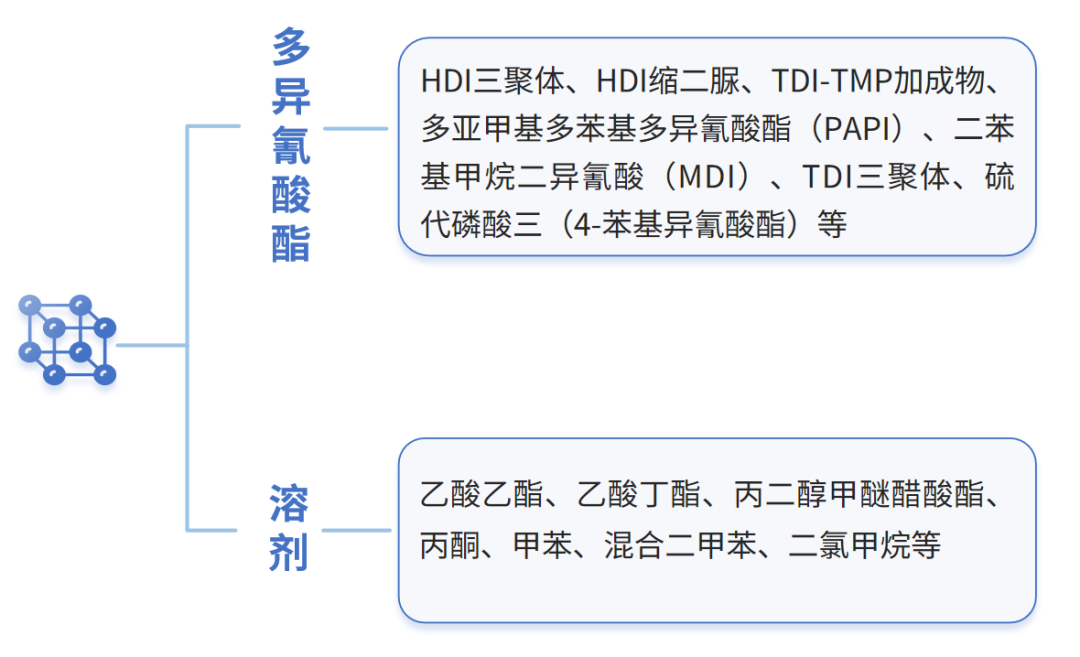
The structural formulas of some common polyisocyanates
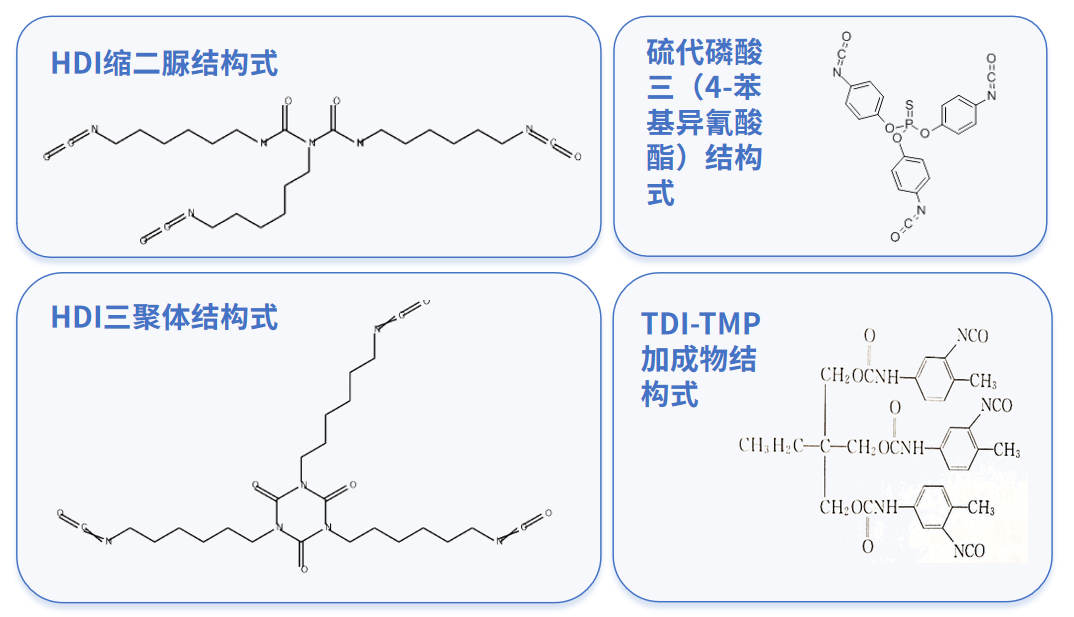
Water-dispersible curing agent
With the increasing awareness of environmental protection, waterborne polyurethane materials are gradually gaining attention. In two-component waterborne polyurethane products, the isocyanate component plays a crucial role. The common approach currently is to achieve dispersion in water by hydrophilic modification of isocyanates. The main methods of modification includeNon-ionic modificationAnionic modification Anionic-Nonionic Modification。
Non-ionic modification
Non-ionic modification mainly involves hydrophilic modification of polyisocyanates using methoxy polyethylene glycol (MPEG), polyethylene glycol (PEG), and similar agents. The modified polyurethane curing agents not only possess a certain degree of hydrophilicity, but also have their residual NCO groups encapsulated, enabling them to remain stable in water for a period of time.
The composition of commonly modified nonionic substances
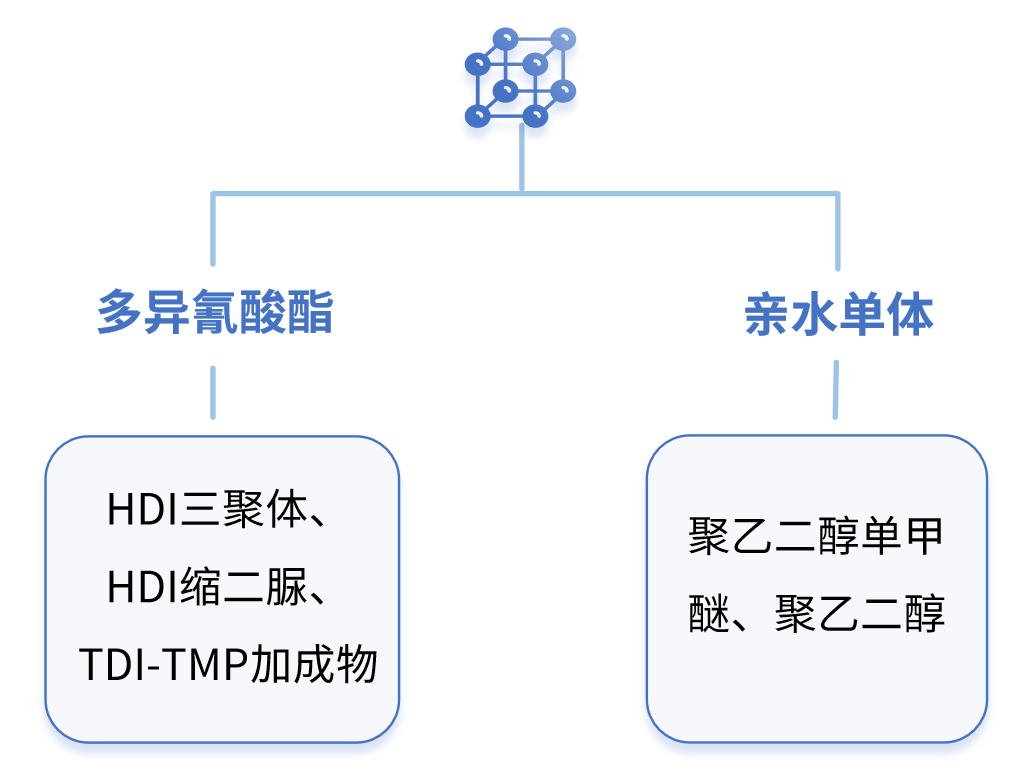
Anion modification
Hydrophilic polyisocyanates can also be obtained through ionic modification. The main types of ionic modification are generally carboxylate modification and sulfonate modification. Carboxylate modification typically uses dimethylolpropionic acid (DMPA), while sulfonate modification usually employs ethylenediamine sulfonate and sulfamic acid salts. These modifiers introduce carboxyl or sulfonic acid groups into the molecular chain, enabling the polyurethane curing agent to emulsify in water.
Anion-modified common substance composition
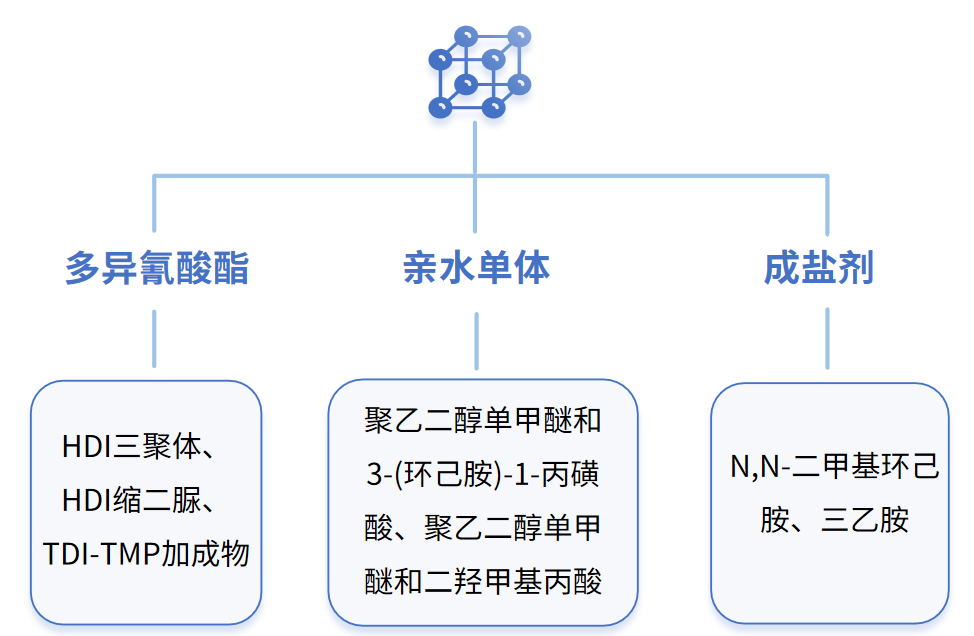
Anionic-nonionic modification
Currently, non-ionic modification commonly uses polyethylene glycol monomethyl ether, but the introduction of monomethyl ether can cause issues with water resistance and a tendency to crystallize. Although ionic modification can solve water resistance issues, it requires a high pH level for the solution. Anionic-nonionic mixed modification can better overcome the aforementioned problems.
Composition of common substances for anionic-nonionic modification
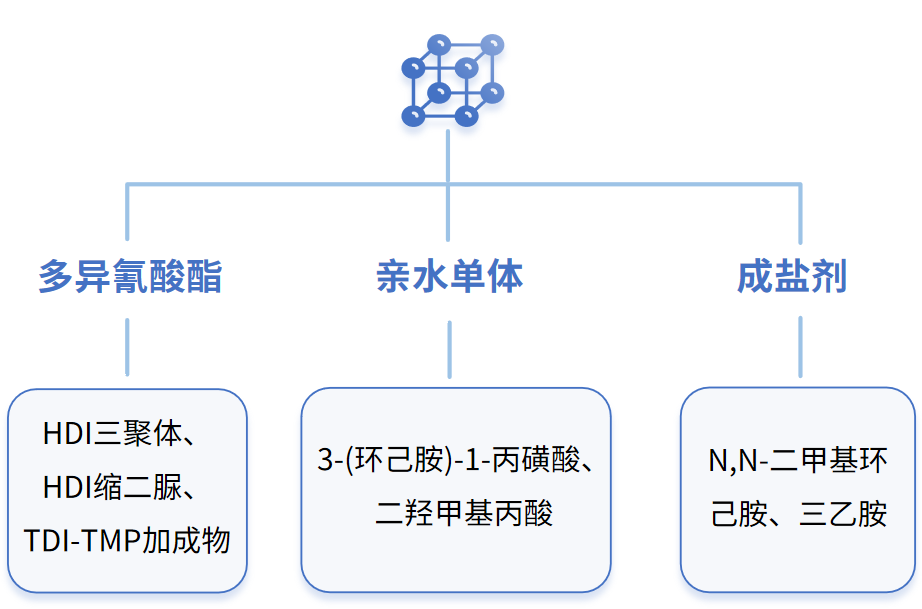
Closed-cell polyurethaneCuring agent
The NCO groups in the curing agent component have high reactivity and can react with moisture in the air at room temperature, causing deterioration. To facilitate storage and reduce raw material loss,A blocking agent can be used to react with NCO to produce a blocked curing agent that is stable at room temperature.
The blocked curing agent can restore its original isocyanate structure and react with hydroxyl-containing components by heating. The formulation design idea is generally to introduce a blocking agent based on the common solvent-based and water-dispersible polyurethane curing agents mentioned above, so as to cap the excess NCO groups. The deblocking temperatures of different blocking agents vary, and we can also choose different blocking agents according to specific usage scenarios. Common blocking agents and their deblocking temperatures are shown in the table below.
Common Sealants and Their Unsealing Temperatures
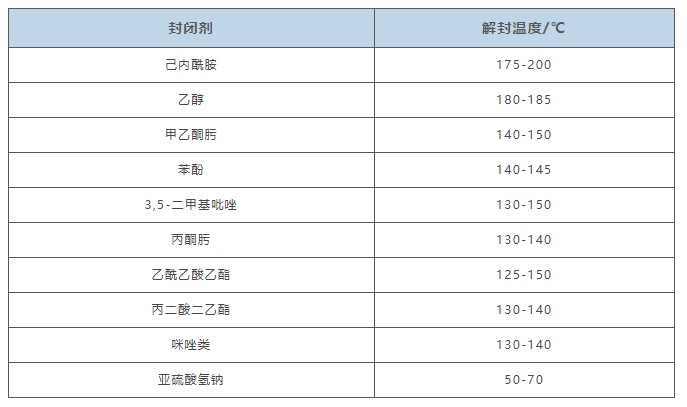
Polyurethane curing agent applications
With the rapid development of polyurethane, its curing agents have also emerged and developed rapidly.
Polyurethane curing agents are used in adhesives, printing pastes, and inks to enhance bonding performance and improve wash fastness. As an external crosslinker, they are applied in wood varnishes, coatings, and leather finishes to maintain high gloss, increase hardness, and enhance resistance to water and solvents.

In somePaint Baking SystemMost of the time, coil coatings use closed-type polyurethane curing agents, which cure after being unsealed by heating. After film formation, the coating exhibits better toughness, weather resistance, and scratch resistance.

In someHigh-quality furniture industryFor example, matte wood lacquer achieves a matte effect through the molecular structure of the curing agent, rather than by adding matting agents, which results in a varnish coating with lower transparency and poor medium resistance. By using different structured matte curing agents with the same type of lacquer, we can achieve the desired gloss level.

In someFood flexible packaging fieldMost of them use some solvent-based aromatic polyurethane curing agents, such as TDI-TMP adducts. In recent years, considering food safety concerns, researchers have been committed to developing curing agents with low free NCO content and alternative aliphatic polyurethane curing agents.

【Copyright and Disclaimer】The above information is collected and organized by PlastMatch. The copyright belongs to the original author. This article is reprinted for the purpose of providing more information, and it does not imply that PlastMatch endorses the views expressed in the article or guarantees its accuracy. If there are any errors in the source attribution or if your legitimate rights have been infringed, please contact us, and we will promptly correct or remove the content. If other media, websites, or individuals use the aforementioned content, they must clearly indicate the original source and origin of the work and assume legal responsibility on their own.
Most Popular
-

List Released! Mexico Announces 50% Tariff On 1,371 China Product Categories
-

EU Changes ELV Regulation Again: Recycled Plastic Content Dispute and Exclusion of Bio-Based Plastics
-

Mexico officially imposes tariffs on 1,400 chinese products, with rates up to 50%
-

Clariant Unveils Cost-Cutting Plan Details, Plans to Shut Down Multiple Plants
-

Nissan Cuts Production of New Leaf EV in Half Due to Battery Shortage






